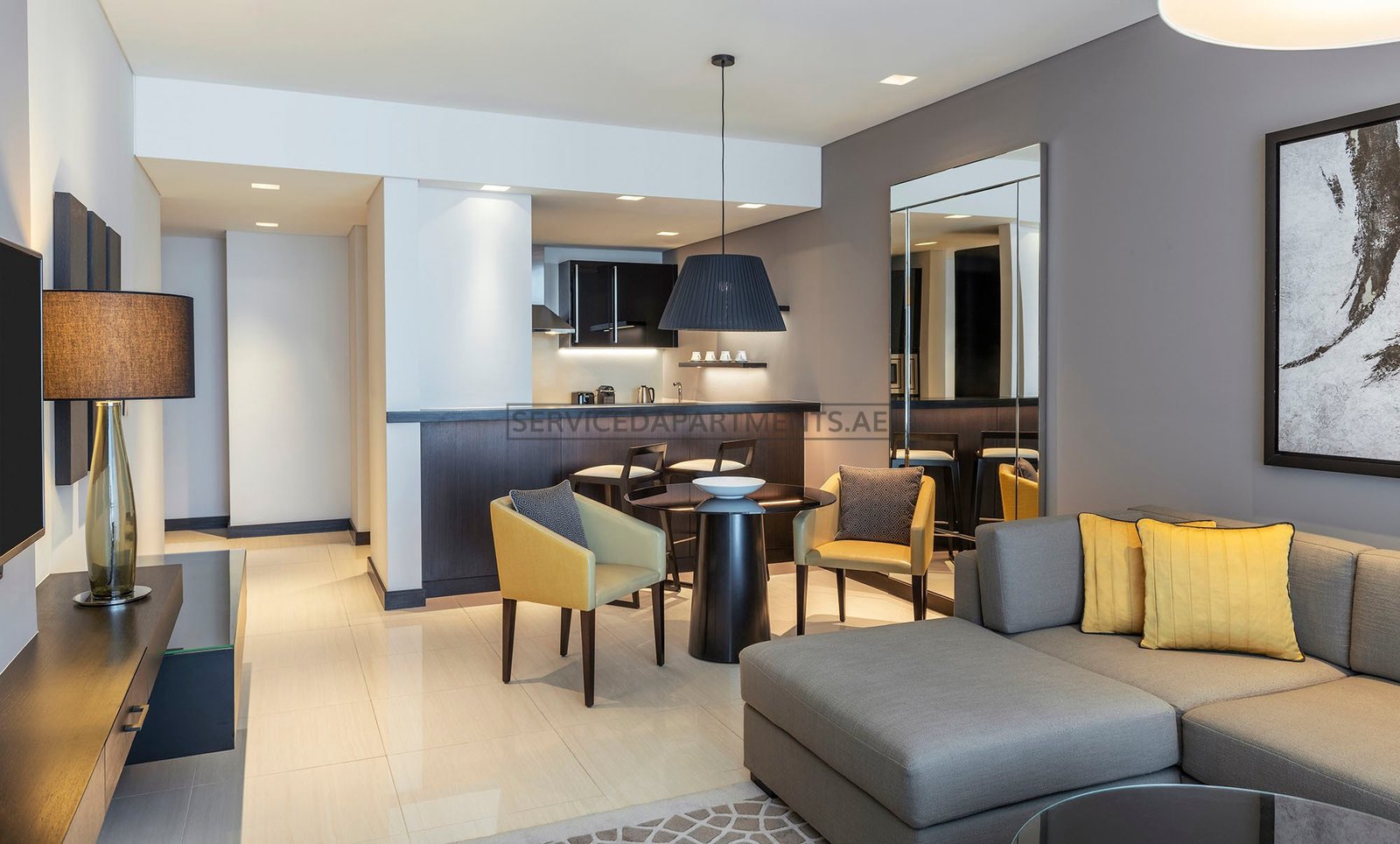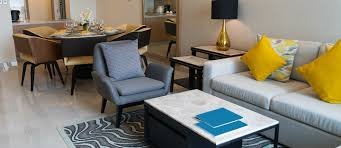
The Dubai rental market has long been a magnet for investors and tenants alike, offering a lifestyle that blends luxury, convenience, and global connectivity. As the city evolves into one of the most cosmopolitan hubs in the world, a new question often arises among property seekers and landlords: Are furnished apartments in Dubai truly worth the premium price tag?
From sleek studios in Downtown Dubai to luxury penthouses in Dubai Marina, furnished apartments offer comfort and convenience—but they also come with higher rental rates. This article explores the pros, cons, and financial realities behind furnished rentals so you can decide whether paying (or charging) that extra premium really makes sense.
In Dubai, the rental market typically offers three main property types: unfurnished, semi-furnished, and fully furnished.
Unfurnished: Usually includes only built-in essentials like kitchen cabinets, lighting, and basic fixtures.
Semi-furnished: Comes with major appliances (fridge, oven, washing machine) but lacks furniture or décor.
Fully furnished: Includes everything from furniture and décor to kitchenware, electronics, and bedding—allowing tenants to move in immediately without buying anything additional.
For many tenants, particularly expats or short-term residents, the appeal of furnished apartments lies in convenience and flexibility. But for investors and landlords, the key question is whether the higher setup and maintenance costs justify the added rent.
Furnished apartments offer immediate livability—no need to shop for furniture, wait for deliveries, or handle logistics. This appeals strongly to:
With everything ready from day one, tenants can simply unpack and settle in, saving time and hassle.
From an investment perspective, furnished apartments can command 10%–25% higher rents than unfurnished ones. Tenants are willing to pay more for the comfort and reduced setup effort.
In areas like Dubai Marina, Jumeirah Beach Residence (JBR), and Business Bay, furnished apartments are especially lucrative due to their appeal among international tenants and short-term visitors.
Furnished units tend to rent out faster than unfurnished ones, particularly in prime locations and near business or tourist hubs. For landlords, that means fewer vacant months and steadier cash flow.
The growing popularity of short-term leasing platforms like Airbnb and Booking.com has increased demand for well-furnished properties. Landlords can earn significantly higher monthly income from short-term tenants, even if occupancy fluctuates.
Corporations relocating staff to Dubai often prefer fully furnished apartments, allowing them to offer turnkey accommodation without dealing with furniture logistics. This creates a steady market for landlords targeting corporate leases.

While the benefits are clear, landlords and tenants should also understand the trade-offs before committing.
A furnished property requires an upfront investment to purchase quality furniture, décor, and appliances. Depending on the size and level of luxury, initial furnishing can cost anywhere from AED 20,000 to AED 150,000 or more.
Cutting corners on quality can lead to faster wear and tear—forcing landlords to replace items more frequently.
Furnished properties require regular upkeep. From cleaning and minor repairs to replacing broken furniture, costs can quickly add up. Tenants may not treat furniture as carefully as owners would, leading to faster depreciation.
Every additional item in the apartment—TVs, lamps, couches, coffee machines—adds another point of potential damage. While security deposits help offset this risk, landlords often end up absorbing minor wear and tear costs after each tenancy.
Furnished apartments often attract short-term tenants, leading to higher turnover rates. Frequent move-ins and move-outs mean more cleaning, inspection, and administrative work, as well as potential vacancy gaps.
Landlords must factor in furniture depreciation and consider contents insurance to protect their investment. Over time, furniture loses value, reducing the real return unless rent premiums are adjusted periodically.
| Aspect | Furnished Apartments | Unfurnished Apartments |
|---|---|---|
| Initial Cost | High (furniture, décor, appliances) | Low |
| Rental Rate | Higher (10–25% premium) | Standard |
| Tenant Type | Expats, short-term, corporate | Long-term residents |
| Occupancy Speed | Faster | Moderate |
| Maintenance | Frequent and higher cost | Lower cost |
| Lease Duration | Often short-term | Typically 1–2 years |
| ROI Potential | High in prime areas | Steady over time |
The right choice depends on your investment goals. If you value stable, long-term income, unfurnished may be better. If you’re seeking higher short-term returns and have the time to manage turnover, furnished units can be very profitable.
Not all locations in Dubai yield equal results for furnished rentals. Success largely depends on the area’s demographics, footfall, and rental demand.
Top-performing areas for furnished apartments include:
These locations command higher rental yields and consistent occupancy for furnished units, especially when well-styled and marketed professionally.
Buy durable furniture that’s modern but neutral in style. Avoid overly bold décor that may not appeal to all tenants. Focus on comfort, functionality, and easy maintenance.
Ensure your property feels like home. Tenants appreciate thoughtful touches such as:
These small details enhance tenant satisfaction and can justify higher rent.
Visual presentation matters. Hire a professional photographer to capture the interior layout, lighting, and décor. Highlight lifestyle shots like balcony views, pool areas, or nearby landmarks.
Many expats and short-term tenants prefer 6-month or monthly contracts. Offering flexibility can boost demand, especially in high-traffic areas.
Managing a furnished unit involves more upkeep—regular cleaning, maintenance, and tenant rotation. A property management company can handle these tasks efficiently, ensuring smooth operations and minimal downtime.
Maximize visibility by listing on:

From the tenant’s perspective, furnished apartments offer flexibility and convenience, but the extra cost may not always be justifiable.
When it’s worth paying the premium:
When it’s not worth it:
Over time, the cumulative rent difference between furnished and unfurnished units can exceed the cost of buying new furniture—making unfurnished a smarter choice for long stays.
To evaluate profitability, landlords should compare setup cost vs. rental premium.
Example:
In this case, the payback period on furnishing cost is three years, assuming consistent occupancy and no major repairs. Beyond that, additional income translates to pure profit.
However, if the property suffers frequent vacancies or furniture damage, ROI may take longer to materialize.
As Dubai continues to attract international professionals, remote workers, and digital nomads, the furnished apartment segment is set to grow. The upcoming expansion of co-living spaces, serviced residences, and short-term rental regulations will also increase market demand for high-quality, move-in-ready homes.
Developers are already adapting—many new projects in Business Bay, Dubai Creek Harbour, and JVC are offering fully furnished options to meet changing tenant preferences.
So, are furnished apartments in Dubai worth the premium? The answer depends on your goals.
For landlords, they offer a chance to earn higher rental income, attract more tenants, and stand out in competitive areas—but require more effort and maintenance. For tenants, they provide unmatched convenience and flexibility, ideal for short stays or relocations.
Ultimately, furnished apartments work best when strategically located, thoughtfully designed, and well-managed. Whether you’re investing, renting, or living in Dubai, the right furnished property can deliver both comfort and strong financial returns—making the premium, in many cases, absolutely worth it.
Do Follow Estate Magazine on Instagram
